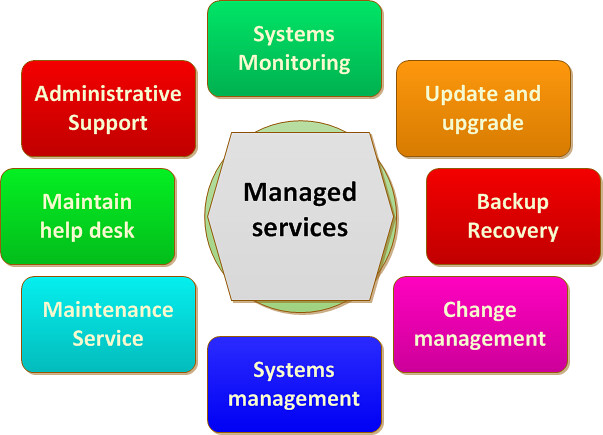Managed IT service?

The majority of small to medium-sized businesses, about two-thirds of them, utilize managed IT services. Learn more.
Coronavirus forced many businesses to make plans for the impact COVID-19 would have on them. As a result, they began to change the speed they were completing plans.
Some businesses have already transformed their services, and digital transformation isn’t anything new; however, there is a definite need to transform how the business runs and functions fully.
There are many ways businesses can undergo a digital transformation, but there is also plenty of temptation to try to do everything possible to modernize the company.
Thrive with Device as a Service
Modernizing the user experience
Digital transformation is not something IT leaders can afford to push through alone. They have to be extremely careful about how they implement the process. There are several preparations they need to ensure in place before they begin working on their digital transformation.
Service providers (SPs) essentially function as pressure relief valves, allowing large companies to offload much of infrastructure and online services maintenance and operation. In addition, it allows their in-house IT teams to develop and use new software tools, leaving them without the need to maintain old ones continually.
You can access daily newsletters on your computer, smartphones, or tablets.
Though we live in a time of the pandemic, MSPs are still valuable assets. VoIP services have been incredibly effective during the health crisis; the business’s switch to remote working has brought several advantages.
And an MSP can serve as a management tool during the crisis, helping keep the small to medium-size business (SMB) on track and making it more resilient. An MSP
How managed IT can benefit your business.
These days, managed services or, as they are sometimes called, the “break/fix” model involves the organization paying a specialist to do things for them. However, a subscription-based model, on the other hand, is usually more focused on a “pay as you go” model. The company will usually work with a service provider to pay a monthly amount for ongoing support.
To manage the needs of the individual companies serviced by a local phone company, the provider may be skilled at different tasks. For example, an MSP may offer essential phone services, but they may also offer more advanced services, such asManaged services are an excellent choice for businesses wanting to scale. However, they are not the best choice for organizations that need to focus on business strategy rather than maintaining and improving their current processes.With outsourced services, (Sla’s) Service Level Agreements are essential to give customers the services they need
Business solutions such as application, network, server, application, payroll, system, network, and backup/recovery solutions are often included in managed services.
A managed service provider will give you new computers from time to time. You can order and handle this hardware by yourself without taking up your time. If you choose to do that, the MSP can help keep the IT department and accounting in the loop by asking you for information about your purchases. If you follow the corporate price list, accounting won’t lose anything on the deal.
MSPs are a popular service for managing small- and medium-sized businesses in the U.S., with an increasing number of them providing cloud services, typically using managed service providers. (I wonder what that may be doing to the economy…)
Another growing area in managed IT services is security, which, in addition to securing network perimeter and access, increases the risk of malicious attacks against networks and users, forcing these organizations to invest in security-managed service providers.
Certain specifics, and general factors, influence a business’ choice of whether to outsource a function to an MSP. However, some factors generally apply, regardless of what type of managed service you choose.
Advantages of managed IT services
For smaller businesses, in particular, outsourcing knowledge and expertise can be a big help. For example, businesses can avoid significant expenses by contracting technical support and accessing expertise and knowledge from outside sources. In terms of predictable costs, organizations can anticipate those affecting them.
You no longer need to worry about whether the software is up-to-date at a constant fee for maintenance and upgrades. Also, not have been available to you. Finally, it will save you valuable time by eliminating the need for in-house departments to perform these tasks.
The disadvantages of managed IT services
Control: A managed service provider with an intelligent platform can monitor the entire network and report on issues, not just your business apps. Amenability:
An MSP with suitable systems can configure custom IT Solutions and Services Company to suit your business requirements by adding new security, data storage, and compliance features. If any updates happen, you don’t have to be concerned about installing them. Reliability: If an MSP goes down, they’re there for you to help restore your services.Get a system you can rely on even if you don’t have a device.
Modernization of the user experience
Despite some evidence that the managed services market is not going away, there was growth in the first quarter of 2020. It is because businesses were willing to adopt managed services during the COVID-19 crisis. In 2020, the large enterprise segment accounted for the highest market share.
As the number of offerings and capabilities of existing offerings continues to grow, it is transparent companies of all sizes will have to use managed IT services for varying parts of their business.
Apart from that if you want to know about Internet Speeds Needed For Small Business then visit our Tech category.


